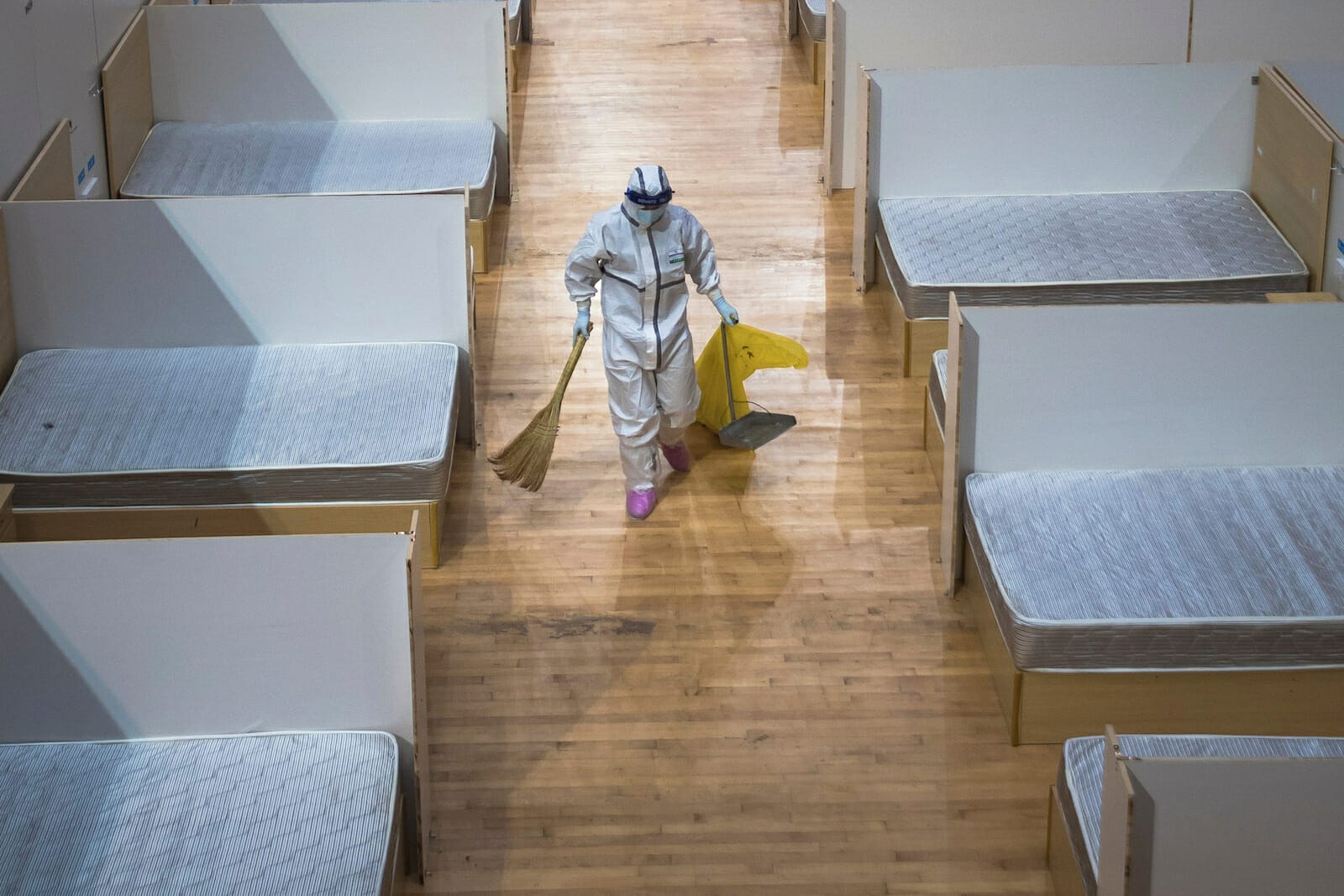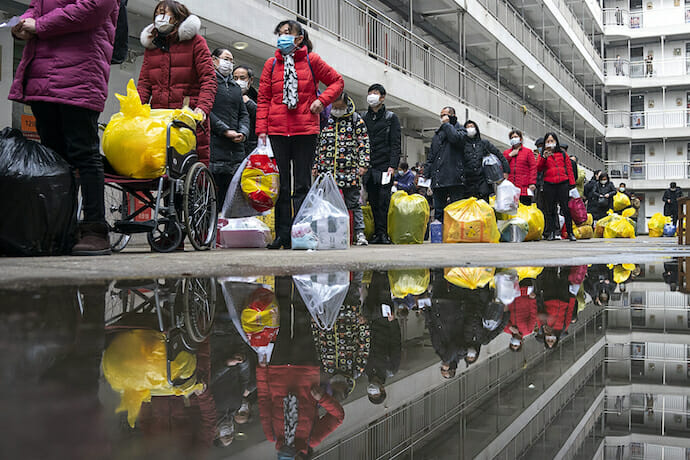
COVID-19: Lessons from China
If we are to learn from experience then we must be prepared to also distinguish lessons that may be reasonably recognized, adopted and applied from those that are less susceptible to emulation. This simple rule relates directly to China. Whist the WHO and other authorities have now basically begrudgingly approved of the series of steps taken by the Chinese authorities to counter the effect and spread of COVID-19, it may be argued that the actions of both government and civil society in China went further than could be expected elsewhere, especially in nations boasting individualism, freedom, and democracy as their way of life. If this is true, then the lessons to be learned from the Chinese experience are somewhat circumscribed. When Bruce Aylward of the WHO advance team to Wuhan judged that China’s response was “probably the most ambitious and agile” ever recorded, he was bringing together the importance of both government ambition and national responsiveness.
The first lessons relate to regulations and actions of governance. Many of these may be effectively transferred to other nations, a major limit being funding rather than information or inclination. As emphasized by the China Daily “China shows that quick and decisive measures taken by the authorities to reduce population mobility and concentrate medical resources in the hardest-hit region at an early date can make a big difference” was a key to gaining control. To this must be added data transparency and early international cooperation as well as recognition of the fast movement from one trajectory to another – from the first case, first cluster, community transmission, to sustained transmissions. The earliest measures included traffic movement control, quarantine and suspension of medical services in selected hospitals. On the first day of the spring festival holiday traffic volumes decreased by nearly 90% compared to that period in 2019. Within weeks 40,000 medics from throughout China had been sent to the epicenter in Hubei province. With some 300 million Chinese suffering some form of chronic disease (about the size of the entire U.S. population), local authorities opened online drugstores medicating those with chronic diseases without hospital admittance. Major online platforms also multiplied facilities for online drug purchases, which eased pressure on hospitals in crowded areas.
The second group of lessons relates to those actions of employment sectors, communities, and individuals in actually following government and expert advice that do seem to be both important and reproducible in other places. As with the above lessons, most democratic nations should be able to emulate these, but many large nations of low income and with poor infrastructure will have serious trouble in staffing, equipping and funding such a program. At this level, the key to effectiveness lies more with well dispersed and selected information than with official funding. Outstanding at this level in China was the replacement of social activity and gathering with digital interventions. The virus outbreak coincided with the Chinese New Year which normally involves a mass of social occasions in restaurants, amusement parks, museums and theaters, and the digital economy took over speedily – by late February half of the 40% of restaurants offering online take-out service had only developed this facility after the outbreak. Online movies, videos and so on grew exponentially, online education – already very well-established- grew by 300% by late February, with a huge amount of activity off-campus.
The third group of lessons relates to those that are all but impossible to emulate. The most immediate of these (closest to the seats of required action such as homes, schools, hospitals, and workplaces) is where the obvious public problems, discussions, and disagreements have or will occur in other nations now. Many Chinese communities simply reduced public outings, competitions and social celebrations voluntarily and speedily, shopping malls simply shut down. The notion of good hygiene – washing hands and social distancing – was well understood before this. The mortality of even young medical staff appears to have been literally sacrificial, as emphasized by John Oxford of Queen Mary College, London. Eventually, virtually the whole city of Wuhan was contained.

The limitations to emulation here lie in stark political, social and cultural factors, aided and abetted by features of economic structure. For instance, in China as elsewhere throughout East Asia the role of small businesses in total manufacturing output is much greater than in the west. This gives China a direct pathway into local communities which is far less expensive than in the west. Although very many urban Chinese SMEs – providing 80% of urban employment – struggled because they operated in industries hit badly by the virus, they also relied on the social insurance provided by neighborhood and family backing. Unemployment was thereby minimized and there was a notable growth of ‘sharing’ employment and facilities. In such micro-environs, information passes readily and good behavior can be seen and copied.
Again, China suffers less confused and mischievous noise in its social networks and media, mostly because they are to an extent limited by government prohibitions. Clear expert advice to citizens can get through without being so easily impeded by the counter blasts of pure ignorance. In addition, the evidence does suggest that independent social media activists actually played a less cluttered and a more useful role than we might expect under western media anarchy. Linguists and dialecticians produced simple accurate information on social distancing and hygiene in cartoons and voice messages from as early as January. The effect of this seems to have been very strong in the urban areas west of Wuhan, where isolation was aided by voluntary local restrictions such as allowing only one person per household to purchase necessities every three days.
Mass screenings were made relatively simple through unanimous community agreements. In Qianjiang, to the west, mass screenings showed that nearly 40,000 people had contact with Wuhan, of whom 470 were quarantined. Such an agile response reflected a strong underlying community culture of mindfulness and care. Provincial authorities released information maps based on local big data on confirmed patients, cases arising from public meetings, new cases and so on from early February, and these became reliable sources for local community and family action and behavior.
Features that simply cannot be emulated range broadly, and are the ones often neglected by media commentators but could well be fundamental. These conditions are primarily physical. While China suffers from dense populations in many urban areas, it is also a nation of lengthy sparsely populated borders on the western and northern sides, and in large proportions of the northeast and eastern borders. This helps the trickling-away of infection effect during the approaching or crossing of such borders, unlike the case for nations such as the U.S. or most European nations which also have far less effective border controls, but closer to the many sparse borders of Russia. A large proportion of the Chinese population, in fact, resides well away from large densities; its urban population is 57% compared to the U.S. at 82% or Italy’s 70% (denser in the north). China is second only to India in the size of its rural population, which might well help the spatial limitation of infections of many kinds. The work profile of China is far more conducive to both natural isolation of individuals and groups and lesser dispersal of infection from crowded epicenters, as well as occupational health in the open air. Thus China is by far the greatest agricultural producer of all (even more so in arable as against livestock farming), generating approximately 5 times the output of the United States and has 27% of its population employed in agriculture compared to Italy’s 2%, 3% in Spain, and around 1% in the UK and the United States. This is fundamental – by far the worst affected areas in Italy have been the industrial north, Lombardy, Milan, Veneto.
This structure of employment, demographic dispersal and sparse, controlled borderlands puts China at an enormous advantage over most other nations concerning natural features that are impossible to emulate or easily substitute for. Furthermore, the median age of the Chinese population is 38 compared to a world average of 30, and the United States at 38, but the Euro median is 44, the Italian 47.
More importantly, China’s population age 65 and over as a percentage of the total is 12%, compared to 23% for Italy and 17% for the United States. The world’s oldest populations include Italy, Japan, Germany, and Spain.
Together with what we have regarded as fundamentally political and cultural characteristics of China, the rest of the world may now have something of a model of response and containment that is only partially applicable to their own individual circumstances. Optimists might hope that in the richer, democratic west, in Japan and elsewhere, the older civil societies might perform as well as the Chinese controlled authoritarianism in combining governance and civility in combatting what might well otherwise become a global disaster.

